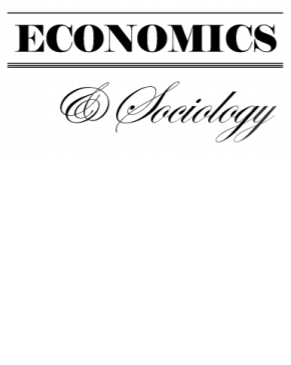ECONOMIC CULTURE OF LOCAL
ACTION GROUP (LAG)
COMMUNITIES FROM PERIPHERAL
REGIONS. EVIDENCE FROM
POLAND
ECONOMIC CULTURE OF LOCAL
ACTION GROUP (LAG)
COMMUNITIES FROM PERIPHERAL
REGIONS. EVIDENCE FROM
POLAND
Author(s): Danuta Guzal-Dec, Łukasz ZbuckiSubject(s): Economy, Agriculture, Socio-Economic Research
Published by: Fundacja Centrum Badań Socjologicznych
Keywords: economic culture; social capital; European Union's LEADER Programme; the Eastern Poland Macro-Region
Summary/Abstract: Studying economic culture fills in theresearch gap that refers to understanding how softfactors of the European Union's LEADERProgramme influence economic growth. The aim ofthis paper is to present the regional specifics ofselected economic culture elements of Local ActionGroup (LAG) communities from the peripheralregions of Eastern Poland. The research was based onliterature analysis, the diagnostic poll method, andstatistical analysis (measures of descriptive statisticsand the Kruskal-Wallis ANOVA test). The features ofeconomic culture exhibited some similarities in theselected voivodeships, but each of them also had itsown characteristics. The normative system inparticular voivodeships should be consideredinternally differentiated at the average level. Such asituation can create positive conditions for LAGdevelopment wherever the level of norms acquisitionis high (mainly in the Podkarpackie and LubelskieVoivodeships). In Warmińsko-Mazurskie, the level oftrust in agents and organisations beyond LAGs (asprospective cooperation partners) is relatively low.The research outcomes can be the premise to suggestways and mechanisms for LEADER Programmeimplementation at the regional level, such as:strengthening identification with the LEADERnormative system as well as shaping the normativesystem in terms of norms referring to the area ofeconomic activity; increasing the bridging socialcapital component, as this, in particular, seems to becrucial for the ability of organisations to grow andinnovativeness.
Journal: Economics and Sociology
- Issue Year: 14/2021
- Issue No: 3
- Page Range: 72-88
- Page Count: 17
- Language: English

